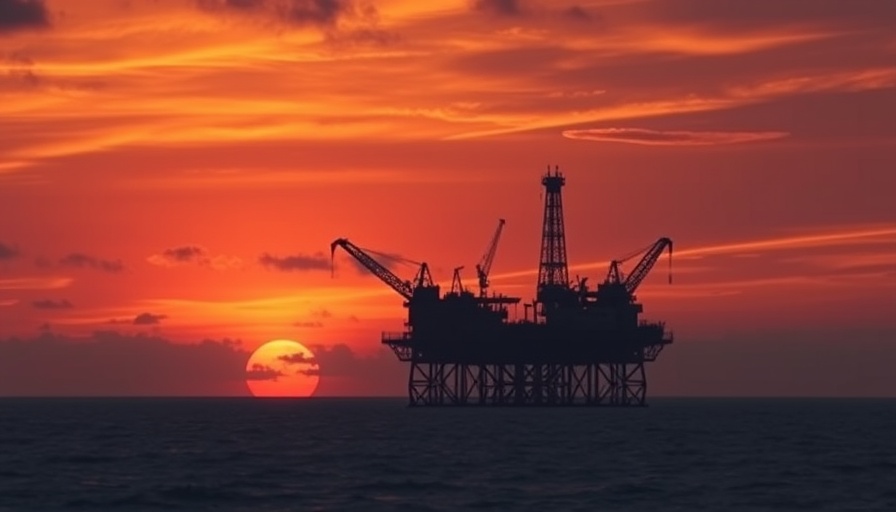
Oil Discovery Announces New Opportunities in Gulf of America
In a significant development for the energy sector, Talos Energy Inc. has confirmed the discovery of oil at the Daenerys exploration prospect within the U.S. Gulf of America's Walker Ridge blocks. This promising find, reported on August 25, 2025, was made during drilling operations utilizing the West Vela deepwater drillship, which reached a total vertical depth of 33,228 feet. According to Talos, multiple high-quality, sub-salt Miocene sands were encountered, signifying a substantial geological strike.
Talos executed a comprehensive wireline program to acquire core, fluid, and log data, essential for evaluating this resource-rich reservoir. Impressively, the well was drilled approximately 12 days ahead of schedule, and the operation came in about $16 million under its projected budget. Such efficient project management underscores the company's growing operational prowess.
Future Appraisal Wells Are on the Horizon
The company is already planning an appraisal well to further investigate and define the discovered resources at Daenerys. This well has been temporarily suspended to preserve its future utility as Talos collaborates with partners to determine the next steps. Talos President and CEO Paul Goodfellow expressed optimism about these results, noting, "We believe these belong to our pre-drill resource assumptions and support our geologic models." The anticipated appraisal well is set to be spudded in the second quarter of 2026, marking the next phase of exploration.
Investments Fueling Growth and Cash Flow Strategies
Talos holds a 27 percent working interest in the Daenerys subject, with other stakeholders, including Shell Offshore Inc. and Houston Energy, contributing significant interests as well. The Daenerys prospect is estimated to harbor between 100 million to 300 million barrels of oil equivalent, presenting an exciting opportunity for the energy market.
This discovery aligns with Talos's recent strategic shift toward becoming a leading offshore exploration and production entity. The company has set a target to boost annual cash flow by $100 million in 2026 through capital efficiency efforts and disciplined acquisitions. Talos aims to continue investing in high-margin organic projects, underscoring its commitment to sustainable growth in the Gulf of America and beyond.
Implications for the Energy Market and Local Economies
The implications of this oil discovery extend beyond Talos's operational strategies and positively impact local economies and energy markets. Enhanced production projections suggest the potential for job creation and economic stimulation within related sectors, such as transportation and hospitality.
Moreover, as energy demands increase globally, successful explorations like Daenerys play a vital role in ensuring a stable supply of hydrocarbons. Talos is strategically positioning itself to tap into these emerging opportunities, promising both environmental oversight and economic benefit.
Comparative Exploration Efforts
Talos's recent success echoes its earlier discoveries, including commercial quantities of oil found in the Katmai West #2 well in the Ewing Bank area. Such positive outcomes reinforce Talos's operational integrity and geological accuracy. Indeed, under-budget and ahead-of-schedule efforts have characterized Talos's recent endeavors, highlighting a reliable track record which stakeholders can trust.
As the company forges ahead with its plans and emphasizes efficiency, investors and local communities alike remain keenly interested in the unfolding developments.
 Add Row
Add Row  Add
Add 




Write A Comment